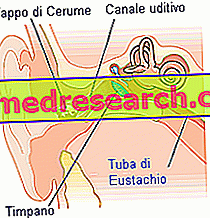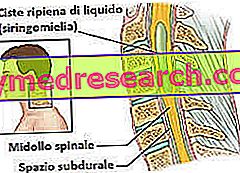What is Betahistine
Betahistine is an active ingredient widely used in the treatment of vertigo. In detail, this molecule is prescribed for the treatment of balance disorders typically induced by Ménière's syndrome. Not surprisingly, in Europe, the use of betahistine was approved in 1970 precisely for the treatment of the symptomatology of the aforementioned syndrome.

Examples of Medicinal Specialties Containing Betahistine
- Microser®
- Vertiserc®
- Jarapp®
Therapeutic indications
What Betahistine is used for
The use of betahistine is indicated for the treatment of symptoms of Ménière's syndrome, such as:
- Vertigo, often accompanied by nausea and vomiting;
- Tinnitus;
- Hearing loss.
Warnings
Before starting betahistine therapy, you must tell your doctor if you suffer from:
- Gastric ulcer;
- Hay fever, rash or hives;
- Hypotension;
- Bronchial asthma.
Children and adolescents
Since there is insufficient information about the safe use of betahistine in children and adolescents under 18 years of age, the use of the active substance in this category of patients is not recommended.
Pharmacological Interactions
Because of the possible drug interactions that can occur, before taking betahistine, it is important to tell your doctor if you are taking any of the following drugs:
- Monoamine oxidase inhibitors, or MAOIs (as they may increase the bioavailability of betahistine);
- Antihistamines (as there may be a reduction in the activity of both drugs).
However, it is always good to inform your doctor if you are taking - or have recently been taken - drugs or other substances of any kind, including non-prescription medicines, herbal products and homeopathic products.
Side effects
Of course, like any other active ingredient, betahistine can also cause side effects after taking it.
However, it should be pointed out that the type and intensity of the undesirable effects may vary from person to person, depending on the sensitivity of the patient to the active ingredient in question.
Nervous System Disorders
Following the intake of betahistine, undesirable effects on the nervous system may occur, such as:
- Headache;
- dizziness;
- Tremors;
- Drowsiness;
- Sensation of heaviness in the head.
Gastrointestinal disorders
In some cases, taking betahistine may cause gastrointestinal disorders, such as:
- Nausea and vomit;
- Dyspepsia;
- Gastric pain;
- Swelling;
- Abdominal distension;
- Flatulence;
- Diarrhea.
To mitigate the aforementioned side effects, betahistine can be taken with meals.
Allergic reactions
As with any other drug, betahistine can also cause allergic reactions in sensitive individuals. These reactions occur with symptoms such as:
- Rashes, itching and hives;
- Angioedema;
- Hypotension;
- Breathing difficulties;
- Loss of consciousness.
If these symptoms occur, contact your doctor immediately and go to the nearest hospital.
Other Side Effects
Additional adverse effects that could occur following administration of betahistine consist of:
- Alteration of the sense of touch (dysesthesia);
- Gastrointestinal hemorrhage (extremely rare);
- Increased blood levels of liver enzymes;
- Worsening of pre-existing bronchial asthma;
- Palpitations.
Overdose
If overdose of betahistine is taken, symptoms may occur, such as:
- Nausea;
- Abdominal pain;
- Drowsiness;
- Convulsions;
- Pulmonary and / or cardiac complications.
Given the seriousness of the symptomatology, if betahistine overdose is suspected, contact the doctor immediately and contact the nearest hospital.
Action mechanism
How Betahistine Works
Betahistine is a histamine analogue with agonist activity against H1 histamine receptors. These receptors are located in different districts, including the blood vessels in the inner ear. Their stimulation is able to induce vasodilation.
Furthermore, betahistine also exerts an antagonistic action against H3-type histamine receptors (mainly located on the pre-synaptic terminations where they negatively modulate the release of histamine itself and many other neurotransmitters). Thanks to this antagonism operated by betahistine, there is therefore an increase in the release of histamine which - in turn - can increase the activation of H1 receptors, thus contributing to the vasodilatory action by betahistine itself.
It can therefore be stated that betahistine acts with a double mechanism of action: a direct one (H1 receptor agonism) and an indirect one (H3 receptor antagonism).
This dual mechanism of action - which leads to the dilation of the blood vessels of the inner ear - improves blood flow in this particular area, thus reducing the pressure increase and improving the typical symptoms of Ménière's syndrome: vertigo, tinnitus and hearing loss.
Method of use and Posology
Betahistine is available for oral administration in the form of tablets or oral solution (in bottle with dispenser cap).
The dose of betahistine usually administered can vary from 16 mg to 48 mg a day, to be taken in a single dose (in case of low doses), or in divided doses throughout the day (in case of high doses).
Betahistine can be taken both during and after meals. However, it should be remembered that administration of betahistine can cause stomach upset. Taking the medicine during main meals could be a solution to the problem.
Pregnancy and breastfeeding
The use of betahistine in pregnant women is generally contraindicated, except in the case where the doctor does not consider absolutely necessary to administer the active ingredient to the pregnant woman.
Furthermore, since it is not known whether betahistine is excreted in breast milk as a precautionary measure, its use in breast-feeding women is not recommended.
Contraindications
When Betahistine should not be used
The use of betahistine is contraindicated in the following cases:
- In case of hypersensitivity known to the same betahistine;
- In patients with pheochromocytoma;
- In patients suffering from peptic ulcer;
- Pregnant;
- During breastfeeding.



